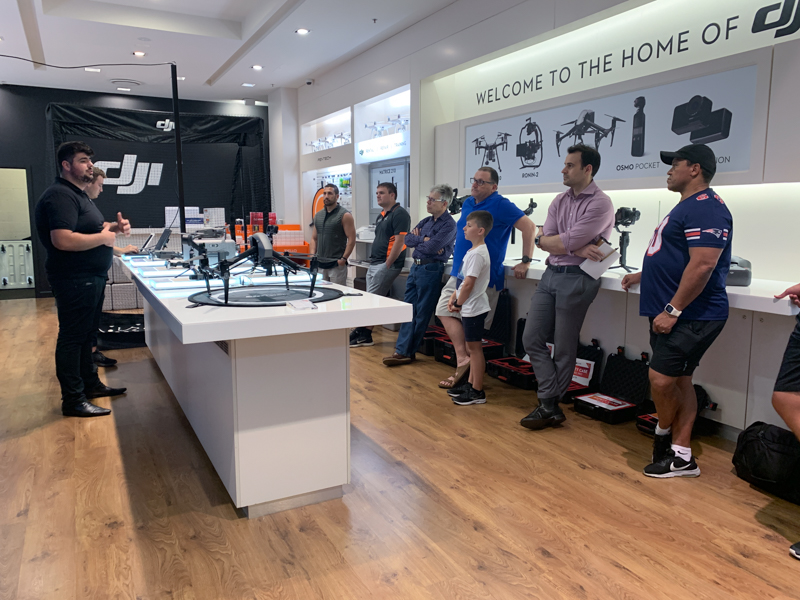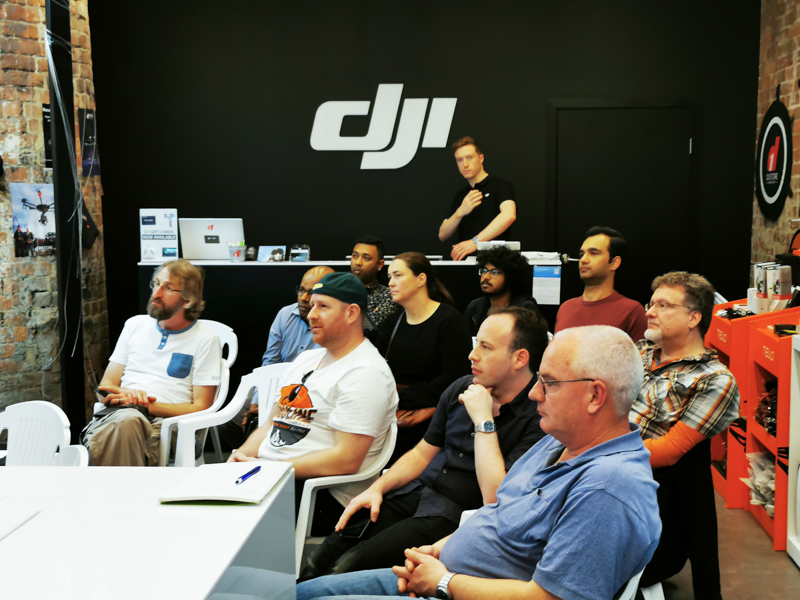New Pilot Experience - 3rd of October
.jpg)
Recap!
On
Thursday night, 6-8PM, DJI store hosted their TENTH New Pilot
Experience across all stores. We had another strong turnout this week
with plenty of first time drone owners.
The two hour course took pilots, with varying levels of experience, through some of the basics to the more intermediate skills. Some of the topics that were covered included pre/post flight checklists, photography/videography settings and CASA laws and regulations.
Understanding the features of the Mavic 2 Intelligent Flight Battery is important to ensure it's longevity.
The Mavic 2 Pro/Zoom Intelligent Flight Battery is a 15.4V, 3859 mAh battery with smart charging/discharging. It is extremely important to only use DJI approved AC power adapter and car chargers to charge the battery. Using third party batteries and cause unwanted damage, swelling and voltage errors.
Each battery contains an Auto-Discharging Function.
To prevent swelling of the battery, the battery will automatically discharge to below 60% of the maximum battery capacity when it is idle for more than 10 days. It is important to store these batteries in a cool environment when these batteries discharge. The reason behind this is the energy that is stored can only be released through heating a chip when it is not connected to anything, sound and light isn't an option here.
The batteries are designed to only be charged, stored and used in the temperature range of 0/5 — 40 degrees Celsius. Anytime the battery goes beyond 40 degrees Celsius, the battery will incur damage and swell due to the gases wanting to be released.
Please be aware that once the battery goes over 50 degrees Celsius, they are prone to malfunctioning and can potentially explode/catch on fire.
Please do not charge the batteries immediately after flight, you will need to wait for them to cool down. Heat is the number one reason why batteries can swell.
It takes approximately three to four days for the battery to discharge to 60%, so it is a slow process.
Using DJI approved chargers is important as when the batteries are charging, the voltages of the battery cells are automatically balanced, the batteries stop once when fully charged (to prevent overcharging) and have short-circuit protection.
There is also an over discharge function in the battery as well to prevent excess discharged.
Each battery contains Hibernation Mode.
The batteries switch off after 20 minutes of inactivity to save power. If the battery level is less than 10%, the battery enters hibernation mode to prevent over-discharge. In Hibernation mode, the battery level indicators do not illuminate. Charge the battery to wake it from hibernation.
The optimal operating temperature for the battery is 20 degrees Celsius.
Furthermore,
the workshop also had many questions asked and answered, boosting
everyone's confidence when using the drone. We encourage people to ask
as many questions as possible. Each week, we try and add those questions
into the course to ensure that it is fresh and relevant! We highly
recommend you to sign-up if you haven't already as it is definitely
worth it! Click here to sign up!

Feedback from the evening!
"Excellent store, great advice and customer service. Fantastic pricing, The Information night was very helpful and beneficial"
— Hamish D.

Question of the week!
How should I store my batteries?
Battery storage is one of the most commonly asked questions during these drone workshop. It is similar to looking after a plant, pet or a phone.
We will go through the recommendations by DJI and Industry Professionals extend and maintain it's life.
If you do not plan to use your batteries in 10 days or more, discharging the batteries to 40-60% will greatly enhance the life of the battery.
As previously mentioned, the battery automatically discharges to below 60% when it is idle for more than 10 days to prevent it from swelling. It takes approximately four days to discharge the battery to 60%.
It is recommended to not store the battery for an extended period after fully discharging it, say after you have flow your drone and you do not charge the flat battery for a long time. This most likely will over discharge the batteries and cause irreparable battery cell damage.Therefore charge your batteries up to at least 40-60% if you do not plan to fly for another month or two.
Definitely remove the batteries from the aircraft when it is stored for an extended period of time.
It is important to store the batteries in an stable climate environment, meaning that the battery is stored around the lower end of the -10 to 45 degrees Celsius scale, 20 degrees in the shade is a common place. Leaving the batteries in the car in the sun is like leaving a toddler or dog in the car. It is definitely not recommended and you will see the end of your battery and can even cause a fire.
In this case, it is better to store the batteries in a safety carrying case of a battery flight safe bag.
Full charge and discharge the battery at least once every 3 months to maintain a healthy battery.
If you plan to transport your battery, it is recommended to transport at around 30% of the capacity and in a flight safety bag.

Further Comments
We are seeing a lot of pilots turning up to the NPE sessions now, please make sure you book in advance to secure your place! We will try to run these sessions for as long as we can. The team really appreciates your support and we will always look after you with your purchase, drone help and more!

Don't miss out on this FREE (only for a limited time) event!

If you have any questions regarding the NPE or this article, please do not hesitate to contact us at info@d1store.com.au.
